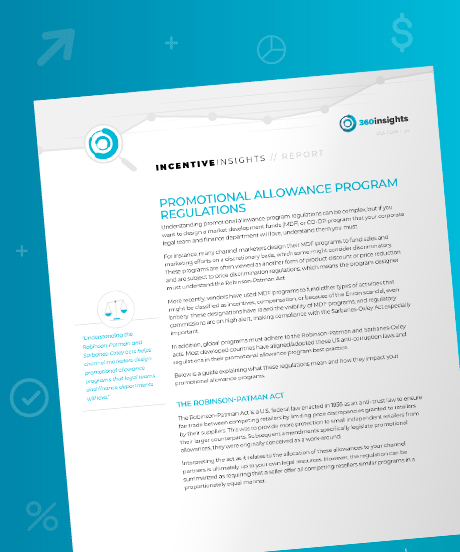A Key Risk Indicator (KRI) is a measurable value used by organizations to track and assess potential risks that could impact their objectives. KRIs serve as early warning signals, allowing businesses to proactively address risks before they escalate.
This involves:
- Identifying and quantifying potential risks
- Monitoring trends and changes associated with risk factors
- Aligning risk metrics with organizational goals and thresholds
In practice, organizations use KRIs to improve risk management by providing actionable insights into areas of vulnerability. This supports better decision-making, resource allocation, and compliance with regulatory standards.
Key Risk Indicators are critical because they help anticipate threats, minimize disruptions, and safeguard the long-term success and stability of the organization.
Setting Your Program up for Success from the Start

eBook
Promotional Allowance Program Regulations
When designing a market development funds (MDF) or CO-OP program, the promotional allowance program regulations can be complex. But they don't need to be.
In this guide, we explain what the regulations mean and how they impact your programs.
Download now, to learn how to create a program that your corporate legal team and finance department will love.
In this guide, we explain what the regulations mean and how they impact your programs.
Download now, to learn how to create a program that your corporate legal team and finance department will love.
